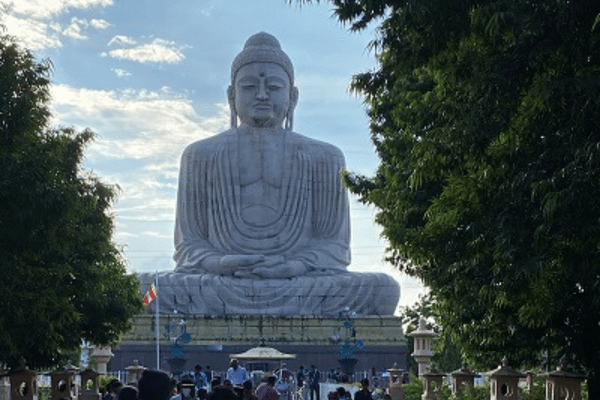Not many know that Gaya, a small town in the state of Bihar in eastern India, boasts a contemporary airport that also accommodates international flights.
“It’s all because of Bodh Gaya,” says Vicky, my driver chauffeuring me from Gaya airport to nearby Bodh Gaya. Bodh Gaya is revered by followers from around the world as the birthplace of Buddhism, and their holiest site of pilgrimage.
“Every year thousands of pilgrims from around the world arrive here, including VIPs like Dalai Lama and Hollywood star Richard Gere, so a decent airport is necessary,” Vicky adds while dropping me at the doorsteps of Mahabodhi International Hotel, my camp for the next few days.
Exploring Bodh Gaya and its surroundings have been on my bucket list for a long time. I’ve visited many well-known Buddhist pilgrimage sites in Sri Lanka, Myanmar, Nepal, Bhutan, Sikkim Indonesia, Thailand and Cambodia. Yet this visit to Bodh Gaya, I had been looking forward to, because as per legend it’s where Buddhism was born and evolved.
Let’s rewind 2600 years, when Siddhartha Gautama was born into a royal family in Lumbini, now dotted in Nepal. At the age of 29, the prince realised that wealth and luxury don’t guarantee happiness. So he left his royal abode to find the key to lasting happiness. Reaching the present site of Bodh Gaya, he sat under a Bodhi (Banyan) tree meditating, until attaining ultimate spiritual enlightenment. Awakened in this manner, he came to be known as ‘Buddha’ which literally means ‘the enlightened one’ or ‘the knower’. He was 35 then and until his death at 80 continued travelling far and wide, preaching his beliefs to his followers. A new religion Buddhism was thus born, making it one of the oldest faiths in the world – many centuries older than Christianity and Islam.
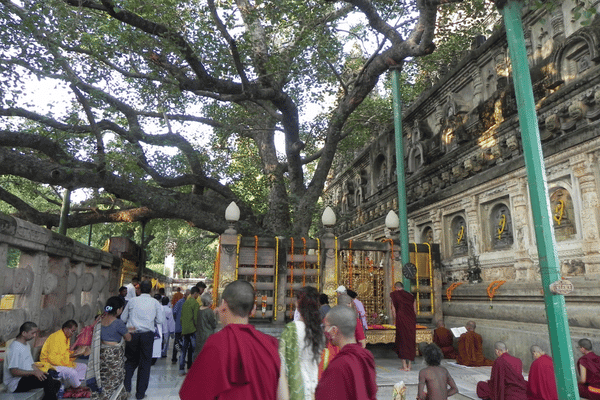
Nearly 300 years after the Buddha’s death, the Mauryan emperor Ashoka, one of his greatest followers, built a monument at the site next to the Bodhi Tree. That sanctuary, rebuilt gorgeously in the 5th century AD, stands today as the famous Mahabodhi Temple. A UNESCO World Heritage Site for obvious reasons, this shrine is to Buddhists what Jerusalem is to the Jews, Bethlehem to the Christians and Mecca to the Muslims.
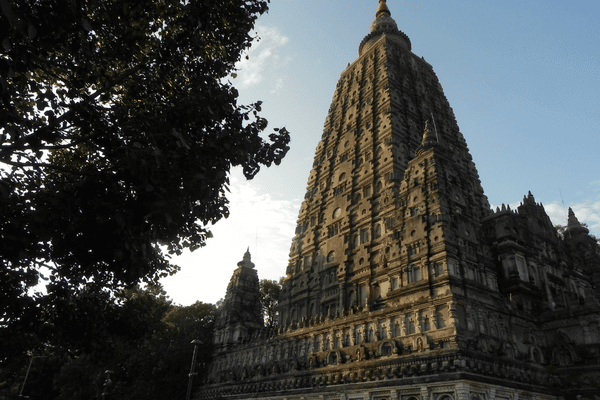
A strong sense of spirituality grips me the moment I enter the sprawling 12-acre temple complex – the actual 55m high temple structure greeting my eyes from a fair distance. I am joined by a stream of visitors like me, outnumbered by the chanting monks dressed in orange, maroon or white attires.
Ushered by my guide Mahesh, I walk straight to the original meditation site where, surrounded by well decorated stone railings, stands the tree – a descendant of the original – and the stone slab laid by Emperor Ashoka later to mark the location where Siddhartha sat, to arise as Buddha.
“That’s exactly where a human became a god,” remarks Mahesh directing my sight towards the exact spot. Hearing that, a sense of divinity rushes through me, no different to the godly feeling I previously sensed as I touched the Western Wall in Jerusalem, the Silver Star inside the Church of Nativity in Bethlehem or the floor of the Mosque in Shirdi where Sai Baba dwelled. The chants from monks surrounding the site transfer their spiritual energy to escalate my feelings.
Mahesh then ushers me to the seven sacred spots within the temple complex, where Buddha meditated for weeks after he had attained self-realisation. All are clearly marked with inscriptions. While passing through the various locations I feel like I’m walking in the shadow of a god.
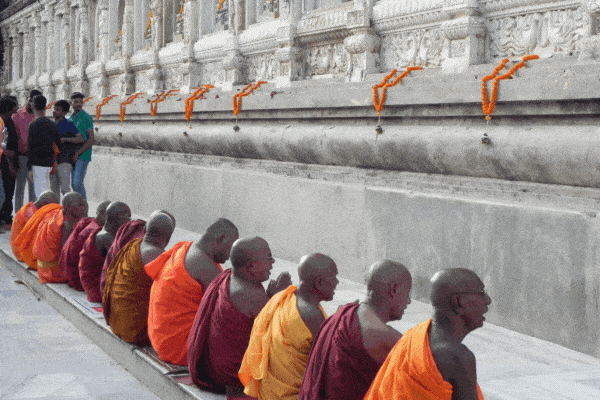
Getting immersed in holiness doesn’t mean ignoring the architectural grandeur of it all: the massive temple was visited in the 7th century by Hieun Tsang, the famous Chinese traveller, and its splendours recorded in his published journal.
The pyramidal tower of the temple comprises several layers of niches, arch motifs, and fine engravings. Four towers, each identical to its central counterpart but smaller in size and topped with an umbrella-like dome, adorn the corners of the two-story structure. A shrine inside the temple holds a yellow sandstone statue of the Buddha encased in glass. Overall, it’s an architectural masterpiece so well built that it has lasted for the past 1500 years.
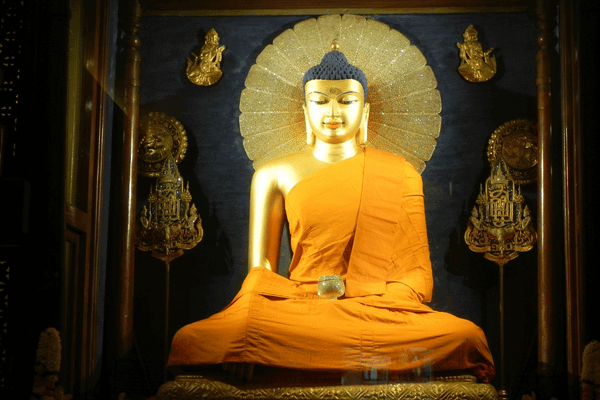
Legend has it that this is the final site that will go down before the destruction of the universe, and the first to reappear on a new beginning.
Bodh Gaya is synonymous with Buddhism. Besides the Mahabodhi Temple, the township is dotted with monasteries from Thailand, Vietnam, Myanmar and Bhutan and also home to a 20m high Buddha statute. The place is not far from Rajgir (where Buddha is said to have preached to his initial followers), and Nalanda (the venue of the excavated ruins of the world’s oldest university which, among other subjects, taught the principles of Buddhism).
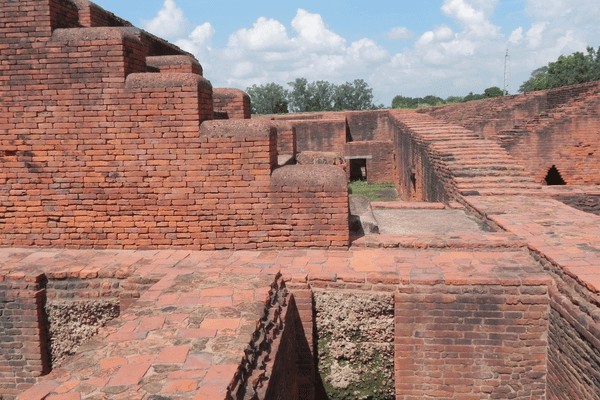
TRAVEL NOTEBOOK
Getting There Thai Airways (www.thaiairways.com) have direct flights from Bangkok to Bodh Gaya. Bodh Gaya is also well connected by rail, road and air to the state capital Patna or Kolkata, the gateway city to eastern India
Accommodation Mahabodhi Hotel, Resort & Convention Centre
(www.mahabodhihotel.com) is a comfortable hotel of international standard.
Ground Arrangements Contact the Exotic Heritage Group (www.exoticheritagegroup.com) for all local ground arrangements.
Mahabodhi Temple Check bodhgayatemple.com



